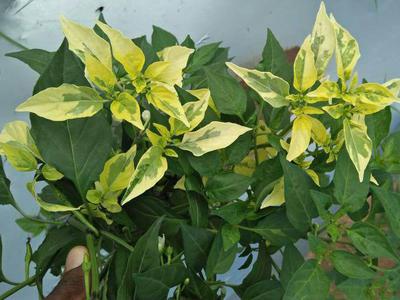Leaf Variegation
Chimera
Other
In a Nutshell
- Green pigments appear reddish.
- Condition is harmless and affects few plants.
Can also be found in
Symptoms
Leaf variegation shows as uneven white to yellow discoloration of portions of leaves and sometimes stems. Tissues with normal green color are adjacent, resulting in a distinct mosaic, patchy or linear pattern. Sometimes venal variegation occurs, that is, the veins are discolored while the rest of the leaf tissue is dark green. If large parts of the plant are affected, the lack of chlorophyll can lead to stunted growth. However, in most cases the deficiency only affects a small percentage of a field and does not affect yields.
Recommendations

Organic Control
As there is no direct environmental cause for this disorder, no biological treatment are available to treat it.

Chemical Control
Always consider an integrated approach with preventive measures and biological treatments if available. Leaf variegation is a genetic or physiologic disorder and as such there are no chemical products available to treat it.
What caused it?
Leaf variegation is a genetic or physiologic abnormality that is independent of environmental conditions, that is, no pathogen is involved. The main cause of leaf variegation is the lack of the pigment chlorophyll in some portions of the leaf tissues. It occurs on a small scale in nature and does not pose any threat to plants or yields. However, some ornamental and garden plants are naturally variegated, and it is part of their beauty.
Preventive Measures
- Use certified seeds from known varieties/hybrids.
- Be sure that the seeds are free of genetic abnormalities can help to prevent Leaf Variegation.



